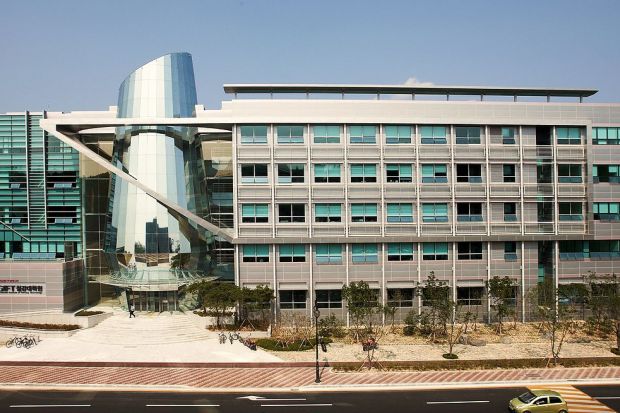POSTECH: Photonic Encryption Platform in the Ultraviolet and Visible
An anticounterfeiting and tampering prevention system using ultraviolet and visible light has been recently proposed by a POSTECH research team. This technology was developed using the metasurface, capable of freely controlling light and anticipated to be applicable in various industries. This study is significant in that it has resolved a long-standing issue for metasurface, which could not be operated in the ultraviolet regime.
A POSTECH research team led by Professor Junsuk Rho (Department of Mechanical Engineering and Department of Chemical Engineering) and Ph.D. candidate Joohoon Kim (Department of Mechanical Engineering) has developed an optical encryption platform that works simultaneously in the visible and ultraviolet (UV) regimes. Featured in ACS Nano, a journal published by the American Chemical Society, this new platform can lead to improvements in encryption security for banknotes or passports.
To use the metasurface, it must be composed of subwavelength structures – smaller than the wavelength of light. However, the wavelength of ultraviolet light is very short, rendering it difficult to fabricate a structure suitable for it. In addition, the fact that silicon – a commonly used material on the metasurface – easily absorbs ultraviolet light is also a limiting factor.
To overcome this issue, the research team adjusted the physical properties of silicon nitride to reduce its tendency to absorb ultraviolet light. Using this material, a metahologram was fabricated in which an image clearly appears when ultraviolet laser is irradiated on it. Then, using the electron beam lithography*1 overlay method, the research team combined the two metaholograms that work in the ultraviolet and visible light regions to create an anticounterfeiting device that displays a unique product number.
When an ultraviolet or visible laser is irradiated on this anticounterfeiting device, images with disparate polarization states are displayed, respectively. The hologram that appears when a visible light laser is irradiated acts as a key and when this key information is input into the ultraviolet polarizer and irradiated with ultraviolet light, certain numbers disappear. These numbers are the unique numbers.
This encryption system is difficult to decrypt because it uses the invisible ultraviolet light and reduces the chances of exposing the password or the code that can confirm forgery or falsification. In addition, by stacking two metasurfaces, the number of images and information that can be stored is markedly increased.
“We were able to create a higher performing optical encryption system utilizing the invisible ultraviolet characteristics,” explained Professor Junsuk Rho. “This study will serve as the basis for opening up the metasurface research to the ultraviolet regime, from being confined to the long wavelength region.” He added, “We are reviewing this technology with relevant organizations for applications in future security technologies for paper bills, passports, and others.”

